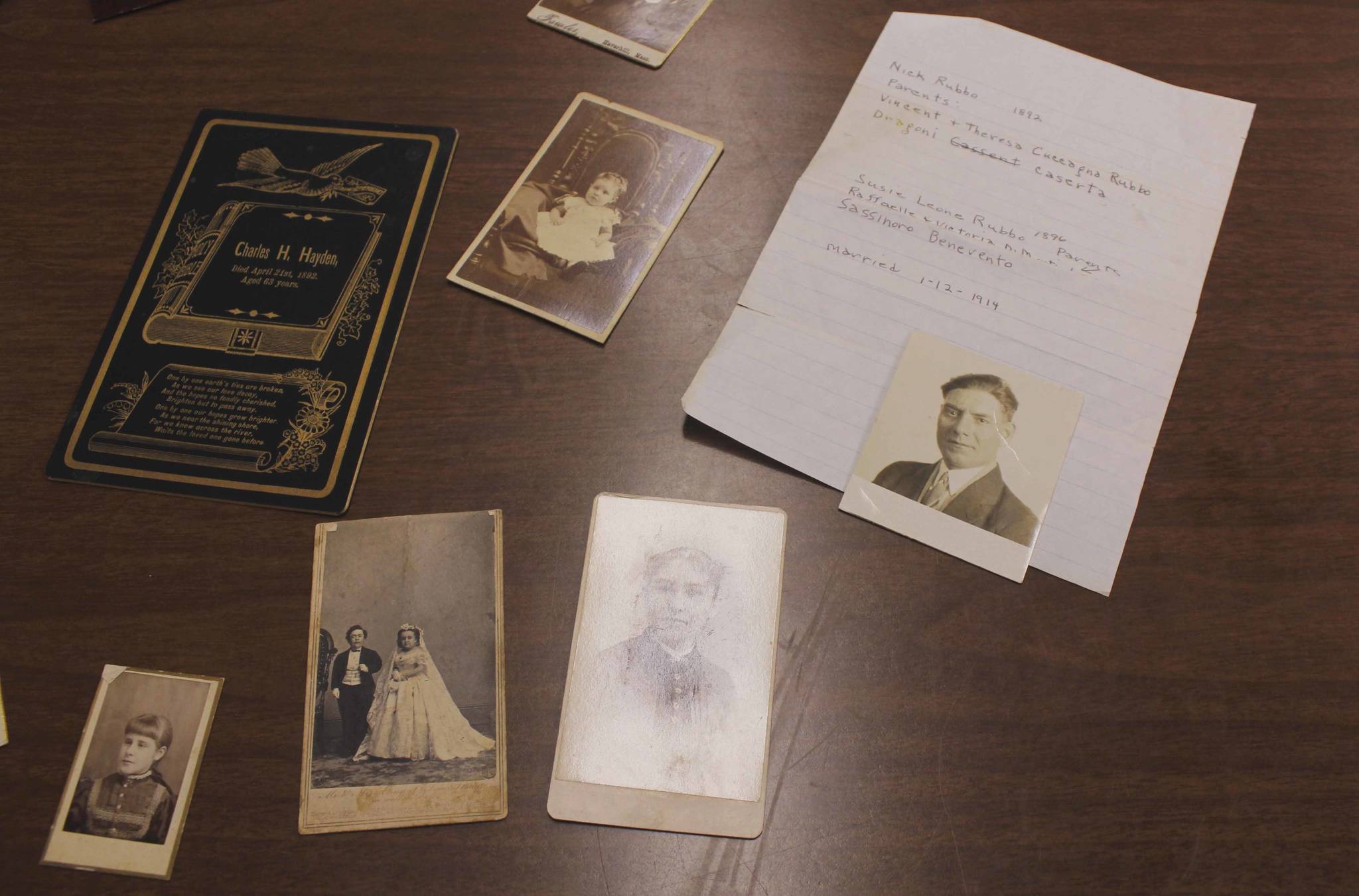It started with an unmarked box in a bag of books.
Someone donated a bag full of old books to the Friends of the Library Amazing Bookstore last summer, but mixed in with the books was an unmarked United States Postal Service Priority Mail box. In the box were a couple dozen small photos, some of which dated back to the 1880s.
This was a rare find.
A couple employees at the bookstore are also part of the Gastineau Genealogical Society (GGS), an organization that helps those in Juneau track down their family roots. This process has become much easier with the way the internet has made the world smaller.
With a find such as this, GGS President Gary Kostenko said, there isn’t any kind of blueprint.
“As far as I’m concerned,” Kostenko said, “we’re breaking new ground on a process.”
As she shuffled through the pictures Monday morning, GGS member Carol Bruce reflected on some of the steps they’re taking to track these. Finding the source of the photos is important, and many of these were taken in Haverhill, Massachusetts. Another step, Bruce said, is to look for which people appear the most in the photos. The person in the most photos is the most important, she said.
For this batch of photos, a man named Nick Rubbo appears to be one of the vital figures. GGS has figured out that Rubbo was born in 1892 and married Susie Leone Rubbo in 1914. They’ve figured out a few other assorted facts about him and others in the photos, but there are still more questions than answers.
“This one’s been a puzzle,” Bruce said Monday, laying the photos on the table in the GGS offices.
The GGS has been operating in Juneau for more than 30 years, and has its offices — referred to as the Family History Center — in the Church of Jesus Christ of Latter-day Saints in the Mendenhall Valley. The office occupies a small space with a meeting room and a storage room filled with books and documents. Many of the books come from donations, either to GGS or to the Amazing Bookstore.
The organization offers help to those looking to find their family histories, and gives people free access to Ancestry.com and other services of the sort. Some family trees are nearly impossible to find, while others find their ancestors almost by accident.
Kostenko remembered a situation years ago where missionaries came to town to film a documentary. One of the missionaries knew that her aunt had moved to Juneau decades earlier and had died in town of tuberculosis, but she didn’t know where she was buried. Kostenko and others tried to help her, looking through old records and having very little luck.
When the missionary happened to mention offhand what her aunt’s maiden name was, the GGS members were quickly able to find the grave through library records. Breakthroughs can happen just that quickly, and Bruce hopes that happens with the anonymous box of photos.
“You really hate to just let these be lost,” Bruce said.
She said this happens maybe once or twice a year, where old artifacts pop up and they work to get them back to their rightful owners. Two other cases have popped up this year, including a high school diploma from Lincoln High School in Lincoln, Nebraska. It’s dated 1935 and belonged to a woman named Eleanor Jean Lewis, and GGS is still working to track Eleanor’s family down. The second new case is a class ring from Lyons High School in 1963, about which there is very little known.
Bruce and the others in the organization are still keeping their eyes and ears open for some kind of breakthrough with the photos, the diploma and the ring. They’re also about to dive into another project, looking to make for easier access to church records from a bygone Douglas church. St. Luke’s Church was in operation from the 1890s to the 1930s, GGS member Teresa Campbell said, and the society is looking to create an index of baptism, confirmation, marriage records and death records.
That’s turning into the biggest role for genealogical societies in the 21st century, Kostenko said, is making records easier to search. With widespread access to the internet, many people can do their own ancestral research with a little bit of help.
“Strides in the family history work in the last 10 years are amazing in comparison to what we were doing prior to that, with the internet and digitizing and things like that,” Kostenko said. “As a matter of fact, more things can be done at home than at Family History Center, nowadays.”
• Contact reporter Alex McCarthy at alex.mccarthy@juneauempire.com.

